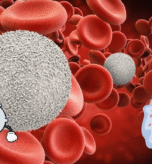When we think of beauty, we often think of art, nature, or people. However, beauty is also present in the spaces we inhabit. Interior design is not just about functionality; it’s an art form that can evoke emotions, influence moods, and create a sense of well-being. In this article, we’ll explore the relationship between beauty and interior design, and how designers can craft spaces that inspire and uplift.
The Psychology of Beauty in Interior Design
Research has shown that our surroundings can significantly impact our mental and emotional states. A well-designed space can boost our mood, productivity, and overall sense of well-being. Beauty in interior design is not just about aesthetics; it’s about creating an environment that nurtures our minds, bodies, and spirits.
Key Elements of Beautiful Interior Design
So, what makes a space beautiful? Here are some key elements that designers consider:
- Balance and Harmony: A balanced composition of visual elements, such as line, shape, color, and texture, creates a sense of harmony and stability.
- Lighting: Lighting can make or break the ambiance of a space. Natural light, artificial light, or a combination of both can be used to create a desired mood or atmosphere.
- Color: Colors can evoke emotions, influence moods, and even affect our perception of space. A thoughtful color palette can add depth, warmth, and personality to a room.
- Texture and Pattern: Mixing textures and patterns can add visual interest and depth to a space. From smooth surfaces to rough-hewn woods, each texture and pattern contributes to the overall aesthetic.
- Nature and Biophilia: Incorporating natural elements, such as plants, wood, or stone, can bring a sense of calm and connection to the outdoors.
Design Styles That Embody Beauty
From minimalist to opulent, various design styles can create beautiful spaces. Here are a few examples:
- Minimalism: Emphasizing simplicity, clean lines, and minimal ornamentation, minimalist design can create a sense of calm and serenity.
- Scandinavian Design: Characterized by light woods, minimal patterns, and functional simplicity, Scandinavian design embodies a sense of warmth and coziness.
- Luxury Design: Rich textures, opulent materials, and attention to detail define luxury design. This style can create a sense of indulgence and sophistication.
The Role of Beauty in Well-being
Beautifully designed spaces can have a profound impact on our well-being. By incorporating elements of nature, using soothing colors, and creating a sense of balance and harmony, designers can craft spaces that:
- Reduce Stress: Calming environments can help reduce stress and anxiety.
- Improve Mood: Beautiful spaces can boost our mood and energy levels.
- Foster Creativity: Well-designed spaces can inspire creativity and productivity.
Conclusion
Beauty and interior design are intricately linked. By understanding the psychology of beauty and incorporating key elements, designers can create spaces that inspire, uplift, and nurture our minds, bodies, and spirits. Whether it’s a minimalist retreat or a luxurious oasis, beautifully designed spaces have the power to transform our lives.
Inspiration for Your Own Space
As you consider your own space, think about what beauty means to you. What elements do you want to incorporate? What mood or atmosphere do you want to create? By embracing the intersection of beauty and interior design, you can craft a space that reflects your personality and inspires your well-being.



